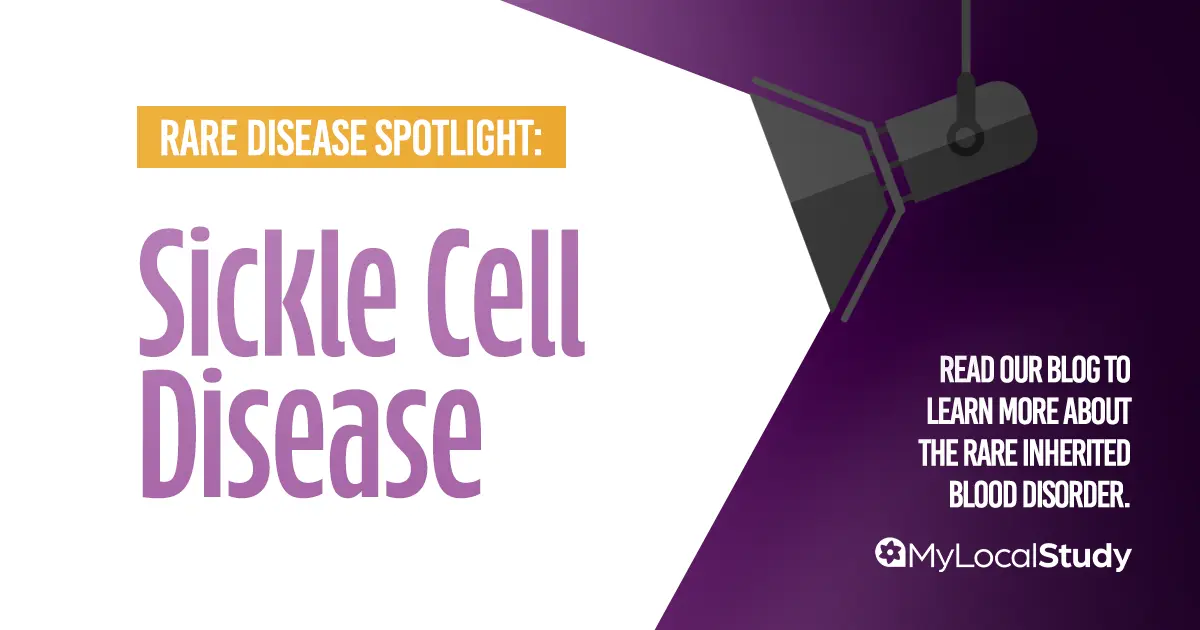Sickle cell disease (SCD) is a genetic blood disorder that affects millions of individuals worldwide. While awareness has increased, many remain uninformed about this condition and its impact on those who live with it. We’re aiming to shed light on SCD, its symptoms, causes, available treatments, and the importance of participating in clinical studies.
What is Sickle Cell Disease?
Sickle cell disease is caused by a mutation in the hemoglobin gene, which leads to the production of abnormal hemoglobin, known as hemoglobin S (HbS). Unlike normal, round red blood cells, sickle-shaped cells can get stuck in blood vessels, causing blockages that disrupt blood flow and lead to various complications.
SCD is inherited in an autosomal recessive manner, meaning that a person must receive two copies of the mutated gene (one from each parent) to develop the disease. Individuals who inherit only one copy are considered carriers and typically do not exhibit symptoms.
Symptoms of Sickle Cell Disease
The symptoms of SCD can vary widely from person to person and may include:
- Pain Crises: Sudden and severe pain episodes, often occurring in the chest, abdomen, or joints due to blood flow blockage.
- Swelling: Swelling in the hands and feet, known as dactylitis, caused by blocked blood vessels.
- Anemia: A reduced number of healthy red blood cells can lead to fatigue, weakness, and pallor.
- Frequent Infections: Increased susceptibility to infections due to spleen damage from sickle cells.
- Delayed Growth: In children and adolescents, delayed growth and puberty can occur due to chronic anemia.
Causes of Sickle Cell Disease
Sickle cell disease is primarily caused by a mutation in the HBB gene located on chromosome 11. This gene provides instructions for making beta-globin, a component of hemoglobin. The specific mutation alters the structure of hemoglobin, leading to the characteristic sickle shape of red blood cells.
The disease is more common in individuals of African, Mediterranean, Middle Eastern, and Indian descent due to historical exposure to malaria, which led to the genetic adaptation of sickle cell traits in those populations.

Treatment Options for Sickle Cell Disease
While there is no universal cure for sickle cell disease, various treatments aim to manage symptoms and reduce complications. Common treatment options include:
- Pain Management: Over-the-counter pain relievers and prescription medications can help manage pain crises.
- Hydroxyurea: This medication reduces the frequency of pain episodes and acute chest syndrome by increasing fetal hemoglobin production.
- Blood Transfusions: Regular transfusions can help treat severe anemia and prevent complications.
- Bone Marrow Transplant: In select cases, this treatment can provide a potential cure, especially in children with severe SCD, but it requires a matched donor and carries risks.
- Gene Therapy: Emerging treatments focus on modifying the patient’s genes to produce normal hemoglobin and reduce the severity of SCD.
The Importance of SCD Research
Clinical research plays a crucial role in advancing our understanding of sickle cell disease and developing new therapies. By participating in clinical studies, patients can access cutting-edge treatments and contribute to vital research that could improve outcomes for future generations.
If you or a loved one is living with SCD, consider exploring opportunities for SCD research studies on MyLocalStudy. These studies are essential for discovering new treatments and potentially finding a cure for sickle cell disease.

